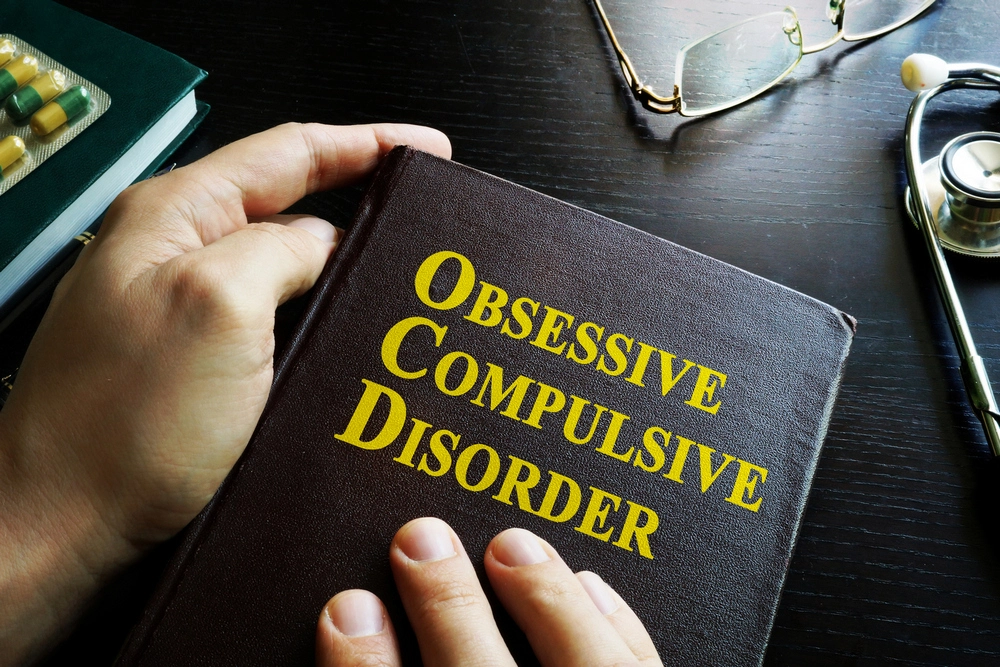Obsessive-Compulsive Disorder (OCD) affects millions of individuals, often causing intrusive thoughts and compulsive behaviors. This article provides actionable insights into how to get rid of OCD, focusing on evidence-based treatments and strategies that can help manage and reduce symptoms, allowing individuals to regain control of their lives.
Introduction
Obsessive-Compulsive Disorder (OCD) is a mental health condition that impacts millions of people worldwide. It is characterized by persistent, intrusive thoughts (obsessions) and repetitive behaviors or mental acts (compulsions) that individuals feel compelled to perform in response to those thoughts. These behaviors are often meant to reduce anxiety or prevent a feared event, but in reality, they can make symptoms worse and interfere with daily life.
The challenges posed by OCD are immense. Individuals may experience overwhelming distress from their thoughts and may spend hours engaging in rituals or compulsions to cope. The constant cycle of intrusive thoughts and compulsive actions can lead to emotional and physical exhaustion, disrupting personal relationships, work, and overall well-being. Despite these challenges, it’s important to recognize that OCD is treatable, and there are numerous effective strategies and treatments available to help manage and reduce symptoms.
Understanding OCD and Its Symptoms
What is OCD?
Obsessive-Compulsive Disorder (OCD) is a chronic condition marked by two primary components: obsessions and compulsions. Obsessions are unwanted, intrusive thoughts, images, or urges that cause significant anxiety or distress. Compulsions, on the other hand, are repetitive behaviors or mental acts that individuals feel driven to perform in response to their obsessions or according to rigid rules. These compulsions are often performed to reduce the distress caused by the obsessions or prevent a feared outcome, even though the actions have little or no connection to the event they are intended to prevent.
OCD can range from mild to severe and can affect people of all ages. While the exact cause of OCD is still not fully understood, it is believed to be a combination of genetic, neurological, and environmental factors.
Common OCD Symptoms
The symptoms of OCD can vary widely between individuals but typically involve the following:
- Obsessions: These are recurring and unwanted thoughts or mental images that cause significant anxiety. Common obsessions include fears of contamination, harming others, or fears of making a mistake.
- Compulsions: These are repetitive behaviors or mental acts that individuals feel compelled to perform to alleviate the distress caused by their obsessions. Examples include washing, checking, counting, or repeating actions.
- Intrusive Thoughts: These thoughts often seem irrational or disturbing and can lead to intense distress, but they are not actions the individual would consciously engage in.
- Avoidance Behaviors: Many individuals with OCD may avoid situations, places, or objects that they associate with their obsessions, which can severely limit their daily activities.
The impact of these symptoms on daily life can be profound, leading to emotional distress, relationship difficulties, and challenges in maintaining jobs or school performance.
The Impact of OCD on Daily Life
OCD can significantly interfere with day-to-day functioning. Individuals may find themselves spending excessive amounts of time performing compulsions or dealing with distressing obsessions. The condition can also cause emotional exhaustion, anxiety, and frustration. The constant cycle of obsessions and compulsions can result in individuals feeling trapped, isolated, and helpless.
Over time, OCD can limit one’s ability to fully engage in life and enjoy activities. It can impact work performance, academic achievement, and social relationships. However, it’s important to note that with the right treatment, individuals can regain control over their symptoms and significantly improve their quality of life.
Effective Treatments for OCD
Cognitive Behavioral Therapy (CBT)
Cognitive Behavioral Therapy (CBT) is the most widely used and effective form of therapy for treating OCD. Specifically, Exposure and Response Prevention (ERP), a type of CBT, has been shown to be highly effective in reducing OCD symptoms.
- What is CBT?
CBT focuses on identifying and challenging negative thought patterns and behaviors. In the case of OCD, CBT helps individuals recognize the connection between their obsessive thoughts and compulsive behaviors, and learn how to break the cycle.
- How CBT Helps with OCD
Through ERP, individuals are gradually exposed to situations that trigger their obsessions, and then encouraged to refrain from engaging in the compulsive behavior. This process helps individuals build tolerance to the anxiety caused by their obsessions, reducing the urge to perform compulsions.
- The Benefits of CBT
CBT has been proven to be highly effective for treating OCD, with studies showing that a significant number of individuals experience a reduction in symptoms after completing CBT treatment. It helps individuals reframe their thoughts, reduce anxiety, and gain control over their compulsive behaviors.
Medication for OCD
Medications can play an important role in managing OCD, particularly for individuals with moderate to severe symptoms. The most common medications prescribed for OCD are:
- Selective Serotonin Reuptake Inhibitors (SSRIs): These are antidepressant medications that increase the level of serotonin in the brain, which helps regulate mood and anxiety. SSRIs like fluoxetine, sertraline, and fluvoxamine are commonly prescribed to help reduce obsessive thoughts and compulsive behaviors.
- Clomipramine: This tricyclic antidepressant is sometimes prescribed for OCD when SSRIs are not effective. Clomipramine is known to help alleviate both obsessive thoughts and compulsive behaviors.
While medications can help reduce symptoms, they are often used in conjunction with therapy to achieve the best results. Medication may be helpful for individuals who experience significant distress or impairment from their OCD symptoms, but therapy remains the cornerstone of treatment.
The Role of Therapy in Reducing Intrusive Thoughts
Therapy, particularly CBT with ERP, is the primary approach for treating OCD. ERP helps individuals confront their intrusive thoughts without resorting to compulsions, which reduces the power of the thoughts over time. Additionally, therapy can provide individuals with coping mechanisms and strategies to manage anxiety and distress in the face of their obsessions.
Therapy also helps individuals challenge the distorted thinking patterns that contribute to OCD. By learning to reframe irrational thoughts, individuals can reduce the frequency and intensity of their obsessions and compulsions.
Combining Therapy and Medication
In many cases, a combination of therapy and medication is the most effective approach to treating OCD. Therapy helps individuals address the psychological aspects of the disorder, while medication can help regulate brain chemistry and alleviate symptoms.
A treatment plan that includes both therapy and medication allows individuals to target OCD from multiple angles, increasing the likelihood of successful symptom reduction and long-term management.
Practical Strategies for Managing OCD Thoughts and Behaviors
Mindfulness and Relaxation Techniques
Mindfulness practices can be beneficial for individuals with OCD, helping them stay grounded in the present moment and reduce anxiety related to obsessive thoughts. Mindfulness meditation, deep breathing exercises, and progressive muscle relaxation can help individuals manage stress and stay calm when they feel overwhelmed by intrusive thoughts.
Self-Help Techniques for Reducing Intrusive Thoughts
Some self-help techniques that may help manage OCD include:
- Thought-stopping: When obsessive thoughts arise, individuals can try saying “stop” aloud or in their mind to disrupt the cycle of rumination.
- Cognitive Restructuring: Reframing obsessive thoughts by challenging irrational beliefs can help reduce the intensity of the thoughts. For example, questioning the likelihood of feared events happening or recognizing that thoughts are not indicative of actions.
Building Healthy Routines
Establishing a structured daily routine can help individuals manage their OCD by reducing the uncertainty that often triggers obsessions. Having set times for activities such as work, meals, and relaxation can help individuals regain control and reduce the urge to perform compulsions.
Conclusion
In conclusion, getting rid of OCD is possible with the right combination of treatment strategies. Cognitive Behavioral Therapy, particularly Exposure and Response Prevention (ERP), along with medication, can help individuals significantly reduce obsessive thoughts and compulsive behaviors. Additionally, practical self-help techniques such as mindfulness and building healthy routines can be valuable tools in managing OCD.
If OCD is affecting your life, it’s important to seek professional help to create an individualized treatment plan. With therapy, medication, and consistent strategies, you can regain control over your thoughts and behaviors, leading to improved quality of life and emotional well-being. Remember, seeking support is a crucial step toward managing OCD effectively.





